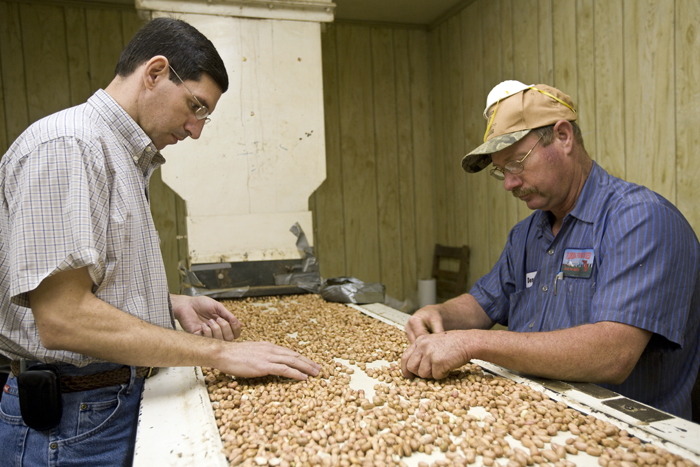
As the saying goes, “hind-sight is 20-20.” As I’m writing this, peering through my bifocals, I wish my vision was still 20-20. But that’s another topic. As peanut harvest comes to a close, it’s often a good time to assess the successes and the disappointments of the season before they are forgotten or become exaggerated, like my fishing stories.
If you’re like me, you’re anxious about the crop from the time the seed are planted until the crop is in the wagon. After a few days, with a few cold nights, I begin to wonder if what I call planting was nothing more than a fancy burial, a final resting spot, a grave for my precious seed. Then the spring sun rises warm and the ground begins to crack and I’m relieved at the sight of a few green leaves peeking out. My mind turns to the plant stand. Will I get the four plants per foot needed? What if there are fewer than that?
A week later, after a heavy rain, green turns to brown and anxiety returns. Valor burn- Ugh! “Just come back in two weeks” I’m told. But I can’t help myself, so I watch every day- a good lesson in patience if you want to try it. In a few weeks, I discover how amazingly resilient those little seed and newborn plants really are. In fact, the plant stand was less then optimal, only around three plants per foot of row instead of four. But they are finally growing well and I’m relieved. Relieved because I know the research shows that two and one-half to three plants per foot of row, somewhat evenly spaced are sufficient.
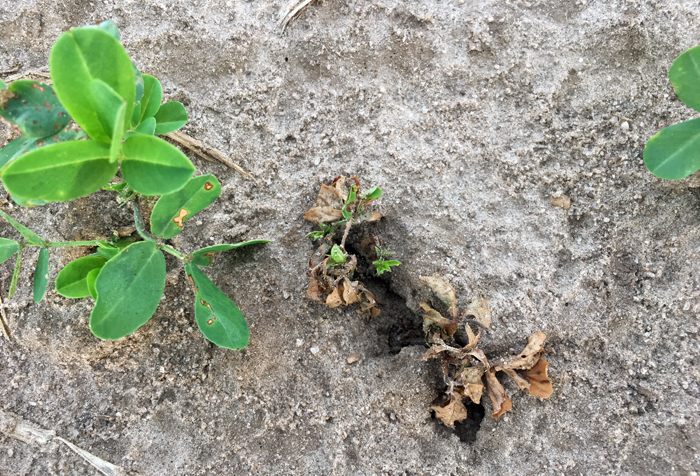
I’m relieved until a few plants, now the size of my hand, begin to die suddenly. Crown rot- Ugh! But, I’m lucky since only a few plants succumb. By now, I know that crown rot was a significant problem in some fields in 2016 and caused some to be replanted. The value of seed treatment, adequately applied, at the correct rate, cannot be overstated. There is no substitute for it when it comes to battling crown rot.
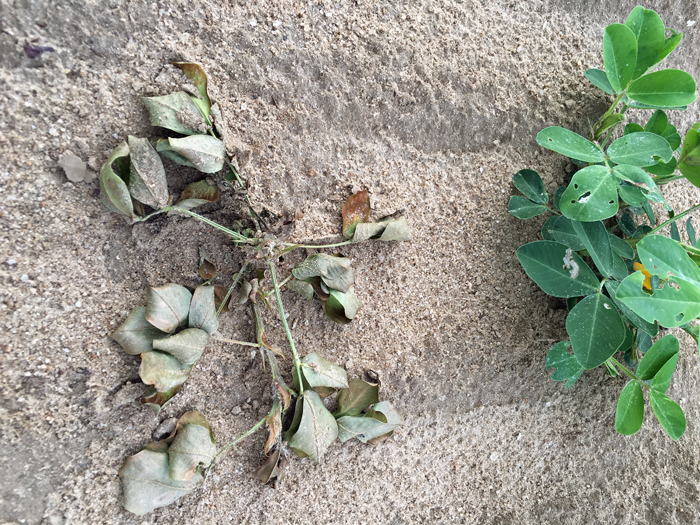
A month later and the plants have nearly lapped the middles and all evidence of cold soils, crown rot, and Valor injury are gone. On to the inevitable- diseases, dreaded peanut diseases. I know the crop is at higher risk for spotted wilt because it was planted in late April without Thimet® (I used Imidacloprid in-furrow), in single rows, and because the final plant stand is less than four plants per foot of row. I’m anxious again because the thrips are hammering the plants where the spray nozzle was clogged. But, I tell myself, “it was a strip-tilled field and I have some varieties with good resistance, so maybe it won’t be too bad.” However, I know that spotted wilt is unforgiving- everything I can do to minimize it must be done when the seed are planted.
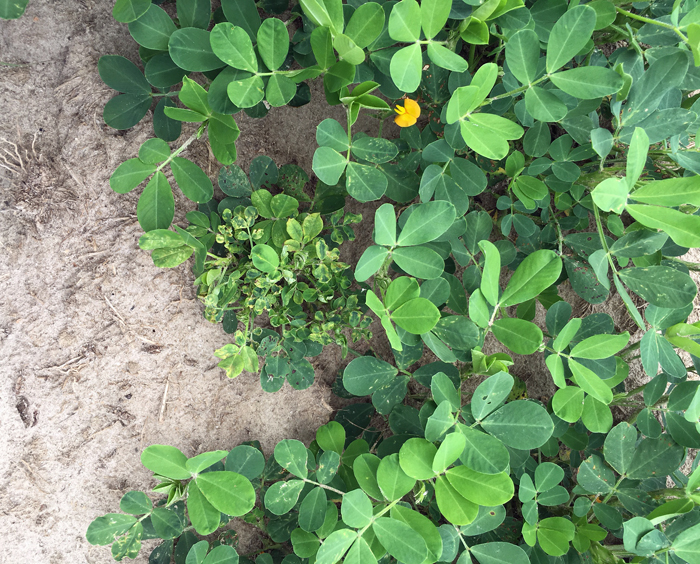
What’s the moral of the spotted wilt story you ask? For minimum risk, here it is: plant after May 10, but before June 1, apply Thimet® in-furrow at planting, plant twin rows, achieve a plant stand of four plants per foot of row, utilize strip-tillage with a good winter cover, and above all, plant a variety with resistance. Only six things to remember for 2017, actually seven with Classic® herbicide: Variety, Planting Date, Plant Population, In-furrow Insecticide, Row Pattern, Tillage and Classic® herbicide.
Another six weeks passes and its mid- summer. Fortunately, spotted wilt, while present all around, is less than 5% incidence- that’s manageable. Fast forward to late August and the plants are big, nearly knee high, and its hot, very hot and humid. A few black spots begin to appear and a limb here and there begins to wilt – leaf spot and white mold- Ugh! But, I’ve followed an excellent fungicide program and have only a few weeks until digging. Surely it will hold until then.
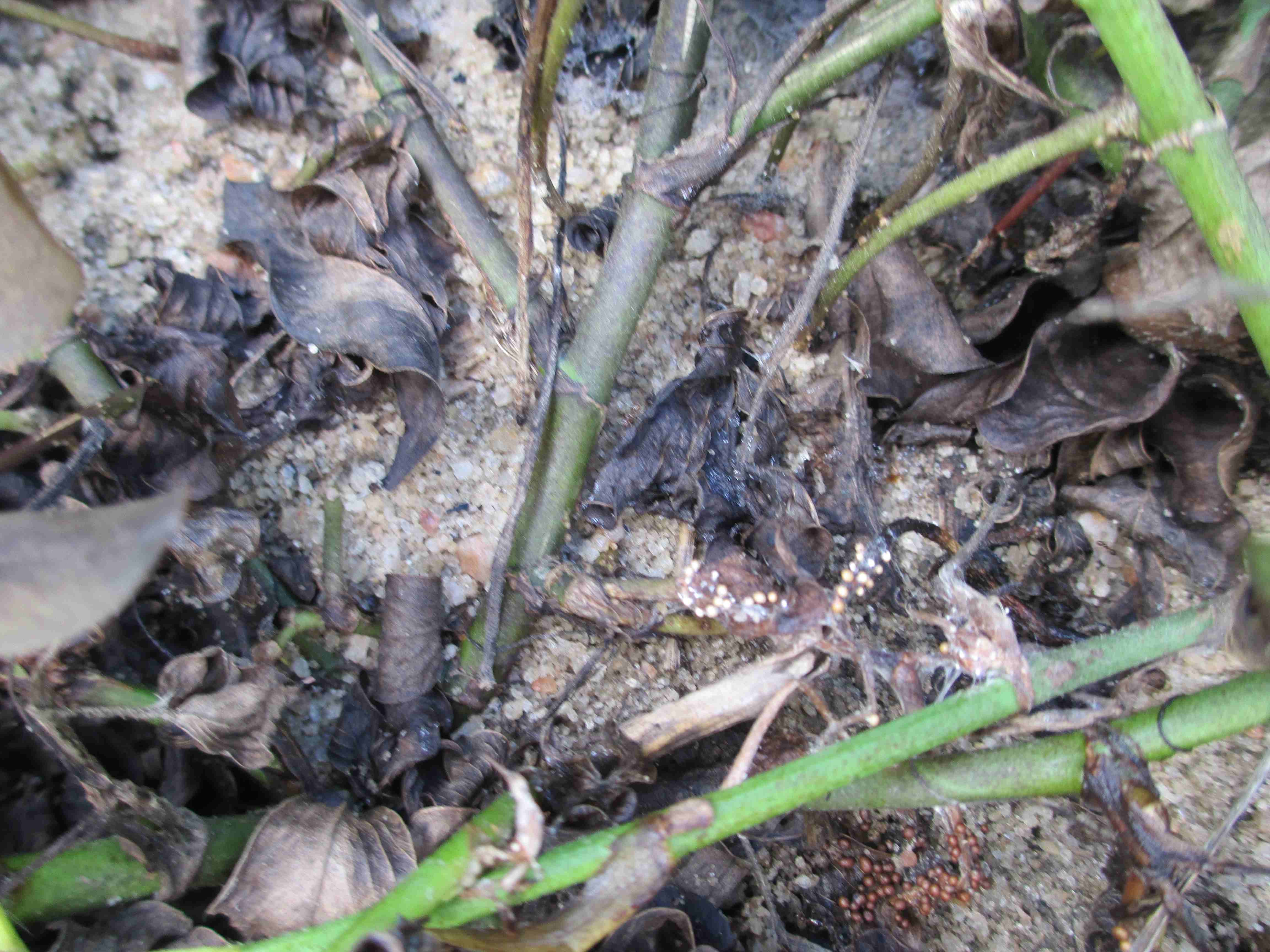
Anxiety returns. Should I spray more frequently? Should I change chemistry? What I know is this – it’s late in the season and the crop is set, the adjusted Growing Degree Days are close to 2100, the pod profile says three weeks until digging, I just applied my last scheduled fungicide, and the disease incidence is low. There are only a few leaves falling off in the lower canopy and only a few hits of white mold, otherwise the plants look healthy. Just another rain or two, or some irrigation and that’s it, it’s time to get the digger ready.
Three weeks pass and the pod profile confirms that it’s time to dig. I’m pleased with what I see. Despite the early stand loss, some Valor® burn, a little crown rot, some spotted wilt, leaf spot and white mold, those vines have a lot of peanuts on them. A few days of sun and they are in the wagon. Nice, plump peanuts.
Anxiety relieved. What seemed devastating turned out to be manageable. What appeared to be insurmountable proved controllable. So it is with every peanut season it seems, and when it’s all said and done, I can look back and learn a few things to help for the next season.
 0
0
